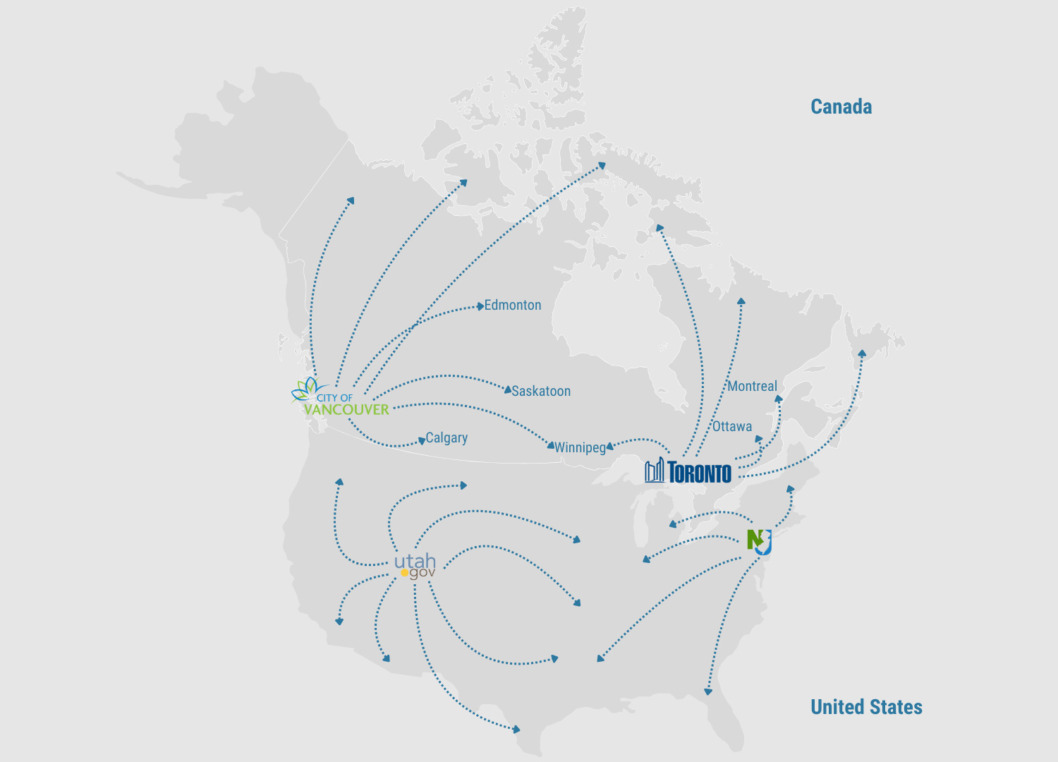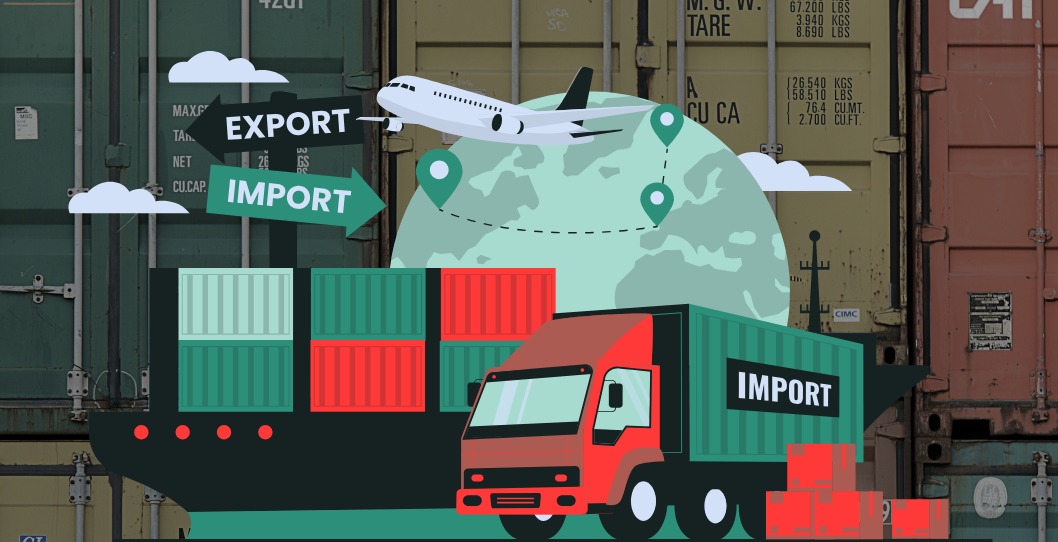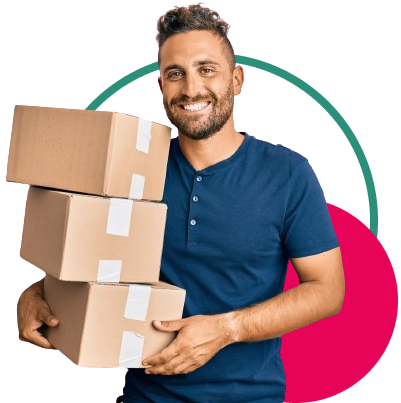Scaling an eCommerce store sounds amazing—more orders, more revenue, and a larger business overall. There’s a lot to like!
If you want to scale your store, you need to be able to fulfill orders. At first, you can ship your own orders. Then you might choose to hire one third-party logistics (3PL) partner to cut down on the work you have to do yourself.
But what do you do if your company is too big for just one 3PL to handle? What if you want to ship to an international customer base without spending a fortune? That’s where having multiple 3PLs—a 3PL network—comes in.
Of course, that idea itself raises a bunch of questions:
- How many 3PLs do you need?
- When is the right time to expand?
- How do you avoid making expensive mistakes?
Those are huge questions, so to help answer those, we’ve tapped into the expertise of Adayra Lopez, Vice President of Sales at InterFulfillment, a Canadian 3PL that we work with on a regular basis. She has been in logistics for decades and so we are happy to share her insights throughout this piece.
How many 3PLs do I need?
There’s no simple answer to this question. At a basic level, you need enough orders to meet each 3PL’s minimum order volume before even considering adding to your 3PL network. If you have a customer base in the US, Canada, Europe, and Australia but just 100 orders per month, you’re better off picking just one fulfillment center that can reach the most customers with the best price.
Adayra Lopez at InterFulfillment agrees that the answer is rarely one-size-fits-all. “For localized operations, a single 3PL may suffice,” she says. “But for businesses spanning multiple countries, engaging a specialized 3PL for each market often delivers better results.”
Having a solid multi-3PL strategy means you have to think about compliance, infrastructure, and market dynamics. “Each country has unique shipping, customs, and tax regulations,” explains Lopez. For smooth operations with minimal delays, she suggests “partnering with a 3PL knowledgeable about local compliance.”
Geography also plays a defining role. Lopez points to Canada as an example: “Canada’s vast geography and dispersed population require optimized routing and strategically located fulfillment centers.”
In the U.S., the logistics situation is quite different. Lopez notes that “the U.S.’s dense infrastructure supports faster deliveries with a broader carrier network.Local expertise is especially important when it comes to last-mile delivery. “Regional 3PLs leverage strong relationships with local carriers to secure better rates, enhance delivery speeds, and streamline reverse logistics.”
Her recommendation is to focus on assigning a single trusted 3PL to manage all orders within each market. “This reduces complexity, optimizes inventory based on demand, minimizes costs, and simplifies communication,” says Lopez. This analysis lines up neatly with what we’ve observed at Fulfillrite as well.
How do I know it’s the right time to expand the 3PL network?
Scaling your 3PL network too early is an expensive mistake. As a guiding principle, Lopez suggests taking action if you see “a significant uptick in orders from a new country or region.”
Another red flag is declining delivery performance. “Longer shipping times, rising costs, or a drop in customer satisfaction may indicate the need for a local fulfillment partner,” Lopez adds. These issues can erode customer trust and lead to lost sales—a risk no growing business can afford.
It’s also worth considering compliance here as well, with Lopez saying that “if compliance requirements in new markets are too complex to manage internally, local 3PLs with expertise in those areas can help streamline operations.” This is particularly important as laws and regulations vary widely between regions.
Knowing when to add a 3PL to your network, in other words, is very similar to making the decision to work with a 3PL in the first place.
How do I choose the right 3PL for each region?
Prioritize expertise, location, compliance, and technology when evaluating potential partners, says Lopez. “A 3PL with deep regional knowledge can navigate location-specific logistics challenges, such as geographic constraints, customs clearance, and local carrier partnership.”
She further clarifies, saying that “for example, in Canada, fulfillment centers near Toronto or Vancouver act as strategic hubs, providing brands access to key markets and other regions across the nation,” she says. In the U.S., fulfillment centers on both coasts are critical for nationwide coverage.

Local expertise doesn’t end with logistics. “Understanding consumer preferences in a region helps optimize packaging, delivery times, and even reverse logistics,” Lopez notes.
On the subject of compliance, Lopez recommends that you “select 3PLs with expertise in local regulatory requirements, such as customs clearance, tax policies, and product labeling.”
Technology is also very important, with Lopez recommending that store owners “look for features like inventory management systems, real-time order tracking, and simplified returns processing.” And, indeed, juggling multiple 3PLs will require each partner to play nice with your inventory system—so make sure you can count on that being the case.
In addition to all the above, be sure to do your due diligence when it comes to reviews, investigating prices, and making sure your potential partners are good communicators.
How does working with multiple 3PLs affect delivery time, cost, and customer service?
Expanding your eCommerce fulfillment network by partnering with multiple 3PLs—each tailored to a specific region or country—can radically overhaul your operations. As Lopez puts it, this approach provides tangible benefits in three key areas: delivery times, costs, and customer satisfaction.
Lopez points out that local fulfillment means inventory “is closer to end customers, reducing transit times.” In practical terms, this means faster shipping, which is critical as customer expectations for quick delivery continue to rise.
Regional expertise also plays a pivotal role in cost optimization. “Partnerships with local carriers minimize shipping costs and overhead expenses,” Lopez explains. A 3PL that knows the intricacies of a region’s logistics can streamline operations, saving money without compromising quality.
The natural result of faster shipping at better prices means happier customers. “Faster delivery and more efficient returns handling improve the overall customer experience,” she notes. This combination of speed and efficiency can boost customer loyalty, which is table stakes for scaling an eCommerce operation.
That doesn’t mean that managing multiple 3PLs is without its challenges, though. Keeping all 3PLs working together “requires robust coordination and seamless technology integration to maintain consistency across the network,” says Lopez. Without a unified system, the benefits of localized logistics can quickly turn into operational headaches.
Lopez emphasizes the importance of selecting the right partners. “To simplify operations and ensure optimal efficiency, it’s critical to partner with a single trusted 3PL within each country,” she advises. She points to Canada as an example, where 3PLs with warehouses in both Vancouver and Toronto provide quick access to major markets on both coasts.
What kind of technology do I need to manage multiple 3PLs?
Managing multiple 3PLs is a complex task that demands advanced technology to maintain efficiency and consistency. According to Lopez, businesses must prioritize tools that provide visibility into order fulfillment and inventory levels, integration with commonly used software, and data you can use to make informed decisions.
“Real-time access to inventory levels across all fulfillment centers ensures better stock control and quicker response times,” says Lopez. This kind of inventory visibility is tremendously helpful for avoiding overstocking or running out of popular products.
System integration is equally important. “Seamless integration between the business and 3PL platforms reduces errors and enhances communication,” Lopez explains. Without smooth data flow, issues like delayed order processing or miscommunication can arise, creating a laundry list of issues that ripple through the supply chain.
Lopez also points out that having quality data can make it much easier to handle the complexities of a multi-country operation. “Insights into key metrics like delivery performance, inventory turnover, and costs help optimize operations,” she says. With this kind of data at your disposal, you can more readily identify weak points, cut unnecessary expenses, and improve service quality.
Automation further streamlines the process. “Streamlined order processing and returns management ensure consistency across multiple 3PLs,” Lopez points out. Automation minimizes manual input, reducing the risk of human error while speeding up fulfillment and reverse logistics.
Finally, unified reporting ties everything together. “Businesses should use a single standardized reporting format for all 3PLs,” says Lopez. This makes data analysis more manageable, enables better decision-making, and makes it where all partners operate under a cohesive framework.
What are some common mistakes to avoid when using multiple 3PLs?
Expanding your fulfillment network to have multiple 3PLs can be risky. But if you know the kinds of issues you’re likely to encounter, you can take steps to prevent them.
The first common one that Lopez lists is ignoring local expertise. “Choosing a 3PL without in-depth knowledge of regional logistics, compliance, or market preferences” is a common mistake. If you make it, the end result could be a nasty combination of delays, compliance penalties, and missed opportunities to cater to customer preferences.
Lopez also suggests another common mistake is “failing to account for differences in infrastructure or population density.” For example, shipping within the U.S. often requires a different strategy than managing fulfillment in Canada, where population centers are more dispersed.
A lack of coordination between internal systems and 3PL platforms is another very common issue. “Poor integration can cause delays and errors,” Lopez warns. This can disrupt the flow of orders, leaving orders unfulfilled, customers frustrated, and businesses scrambling to make things right.
You also don’t want to accidentally preclude future growth and expansion. “Selecting 3PLs that cannot handle increasing order volumes or inventory complexity,” is another common mistake according to Lopez. As eCommerce businesses grow, their fulfillment partners must have the infrastructure and systems to match that pace.
What metrics should I use to measure 3PL performance?
You need a way to measure the performance of your 3PL partners if you want to be sure they’re meeting expectations and supporting your growth. Below is a list of useful metrics that Lopez recommends monitoring to make that happen.
The first metric to monitor is the on-time delivery rate. “This reflects the reliability of the 3PL’s operations,” says Lopez. Late deliveries can erode customer trust and harm your reputation, making this KPI a big one for customer satisfaction.
Another vital metric is order accuracy. “This measures how often orders are fulfilled without errors,” Lopez explains. Mistakes in picking, packing, or shipping can lead to costly returns, refunds, and unhappy customers.
For cost control, track the cost per order. “[This helps] you understand cost efficiency in fulfillment and shipping,” Lopez adds. Keeping fulfillment costs in check without sacrificing quality ensures profitability as you scale.
Inventory management is also crucial. “Inventory turnover indicates how effectively inventory is managed and replenished,” Lopez notes. A high turnover rate suggests efficient stock handling. But a low rate may signal overstocking or slow-moving products.
Lopez lastly emphasizes the importance of customer satisfaction scores. “This captures the end-to-end experience, including delivery and returns,” she says. High satisfaction rates not only drive repeat business but also strengthen your brand’s reputation.
Final Thoughts
Scaling an eCommerce operation with multiple 3PLs requires forethought and planning. Each individual 3PL needs to fit into a larger picture in order to make sure you can ship orders to all of your customers around the world.
Bringing on the wrong 3PLs or bringing on 3PLs too early are both critical mistakes. But if you are careful about timing, proactive about needs assessment, and diligent in vetting individual 3PLs, you can build a global team and dramatically expand your reach.
If you build your 3PL network correctly, you won’t just be scaling your logistics—you’ll be setting the foundation for sustained growth, a competitive edge, and better customer satisfaction. It’s worth the effort to do it right!

